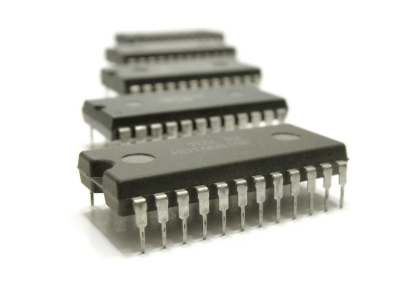What Is a General Purpose Logic IC?
 General-purpose logic ICs are integrated circuits that combine basic circuits, such as logic operations, in a single small package.
General-purpose logic ICs are integrated circuits that combine basic circuits, such as logic operations, in a single small package.
Each package contains one or more basic circuits, and the number of pins, including power supply pins and input/output pins, ranges from several pins to several dozen pins, with products of various sizes.
As electronic devices become increasingly networked, the need for functions to interface between devices has increased. In addition to simple arithmetic circuits, product groups include bus switches for high-speed transmission of digital signals and level shifters for connecting signal lines of different voltages.
Uses of General Purpose Logic ICs
General-purpose logic ICs are used in virtually every electrical device and electronic circuit that exists in the world.
Even in electronic equipment equipped with large-scale LSIs developed exclusively for specific applications, general-purpose logic ICs are used as important interface components that perform signal conversion and switching around the LSI.
However, because general-purpose logic ICs have a large package area compared to the number of circuits, they are often replaced by dedicated ICs that combine multiple functions into a single IC in the consumer electronics field, where miniaturization and weight reduction are progressing, and demand for general purpose logic ICs in this field is declining.
Principles of General Purpose Logic ICs
General-purpose logic ICs are classified into three types according to device structure:
- TTL (Transistor-Transistor Logic): A logic IC consisting of a bipolar transistor and resistors; although an older type of device, it is still used in many places today because of its ability to drive large currents.
- CMOS Logic (Complimentary MOSFET Logic): A logic IC that combines P-ch MOSFETs and N-ch MOSFETs.
- BiCMOS Logic: A logic IC that uses CMOS in the input and logic circuit sections and bipolar transistors in the output section to achieve a high-current drive with low power consumption.
General-purpose logic ICs are classified according to the device structure described above, and there are many other variations according to the functions, circuit scale, power supply level, package type, and pin configuration.
In addition to basic combinational logic circuits (AND, NAND, OR, NOR, XOR, NOT), general-purpose logic ICs have latch circuits that hold input data under certain conditions, flip-flop circuits that latch and hold input data at clock input timing, shift register circuits that convert serial input signals to parallel shift register circuits that convert serial input signals to parallel output signals.
Secondary functions include a Schmitt trigger that responds to analog signal input by providing hysteresis to the input signal threshold, and a 3-state output that has not only H and L outputs but also an open state (high impedance state) to prevent signal collision when switching between input and output dual-use signals. General purpose logic ICs can be selected to best suit the application in combination with the main functions.